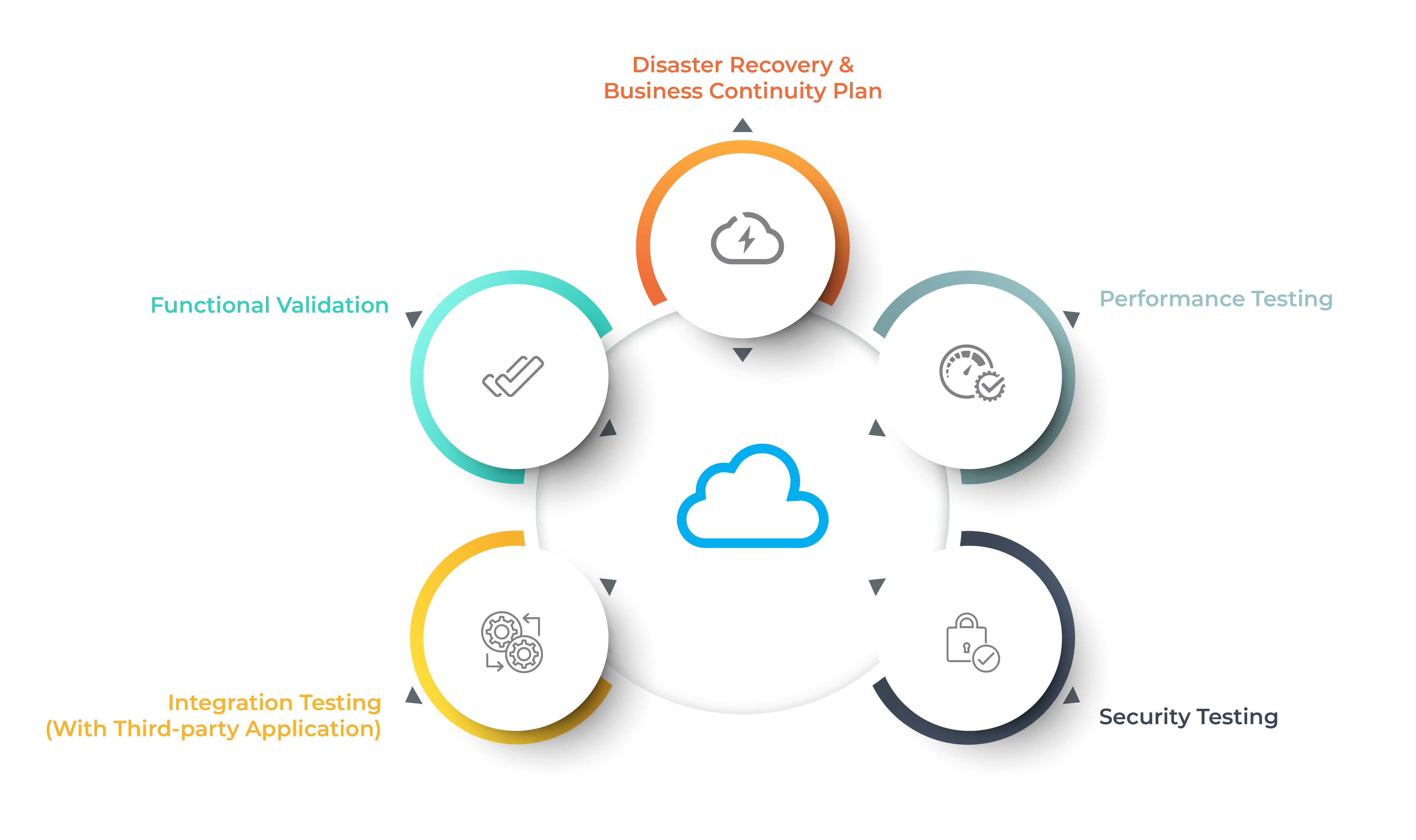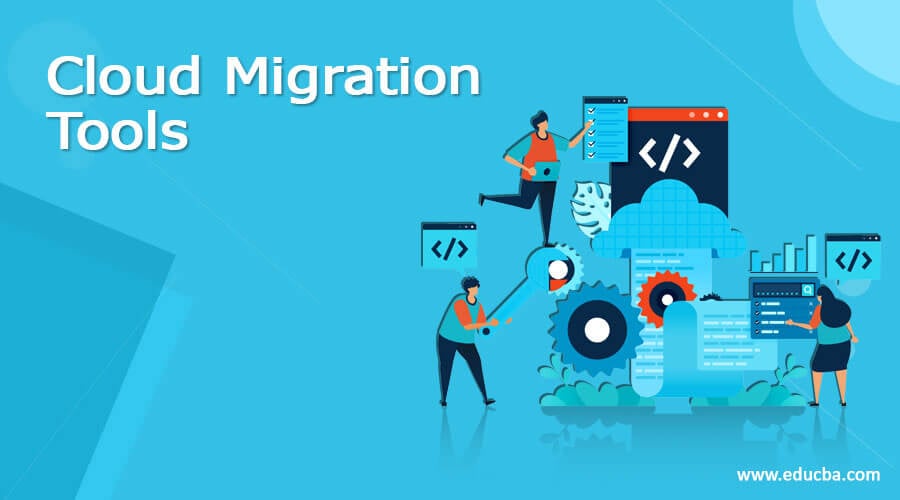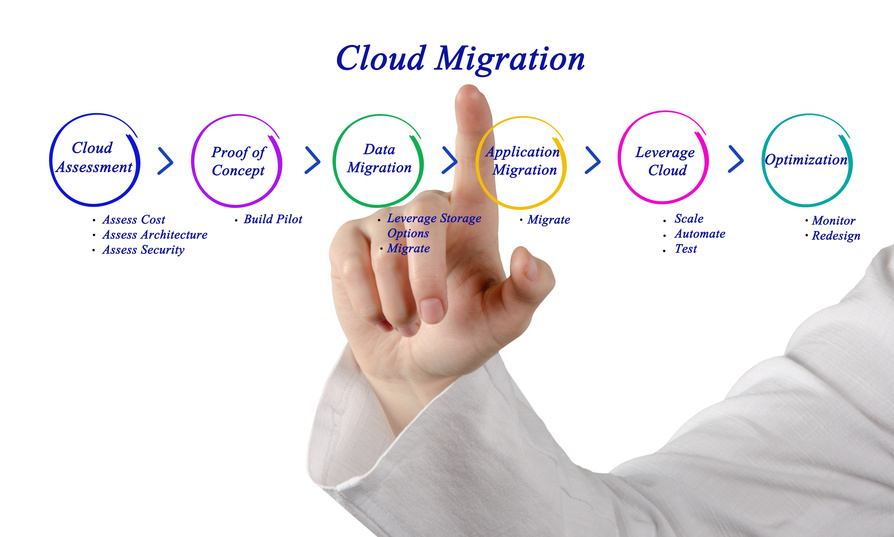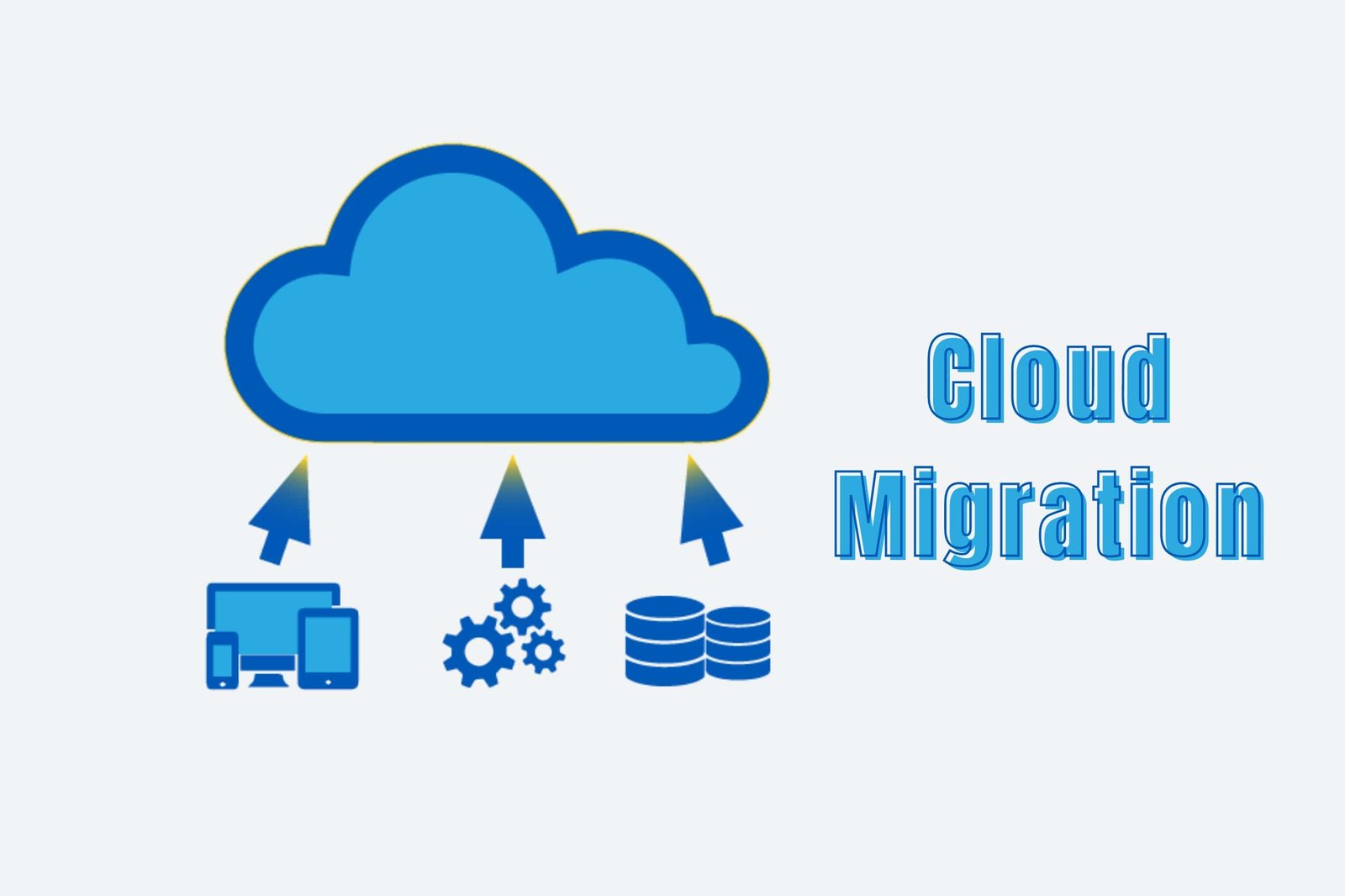Understanding Cloud Application Migration Tools
Cloud application migration tools are software solutions designed to simplify and streamline the process of moving applications and data from on-premises environments to cloud-based platforms. These tools offer a range of benefits, including time and cost savings, improved efficiency, and reduced risk. By automating many of the manual tasks associated with migration, they enable organizations to accelerate their cloud adoption and focus on more strategic initiatives.
One of the primary advantages of cloud application migration tools is their ability to minimize the disruption caused by migration. By automating the transfer of data and applications, they reduce the risk of errors, data loss, and downtime. Additionally, they provide greater visibility into the migration process, allowing organizations to monitor progress and identify potential issues before they become major problems.
Another benefit of cloud application migration tools is their compatibility with a wide range of cloud platforms and application types. Whether organizations are migrating to public, private, or hybrid cloud environments, these tools can help ensure a smooth and seamless transition. Furthermore, they support a variety of application types, including web applications, mobile applications, and enterprise applications, making them a versatile solution for organizations of all sizes and industries.
In summary, cloud application migration tools play a critical role in facilitating the movement of applications and data to the cloud. By automating many of the manual tasks associated with migration, they offer a range of benefits, including time and cost savings, improved efficiency, and reduced risk. As organizations continue to adopt cloud-based platforms, these tools will become increasingly important in ensuring a successful and seamless transition.
Key Features to Look for in Cloud Application Migration Tools
When selecting cloud application migration tools, there are several essential features to consider to ensure a successful and seamless transition. These features include:
- Automation capabilities: Cloud application migration tools with robust automation capabilities can significantly reduce the time and effort required for migration. Look for tools that can automate tasks such as application discovery, assessment, and migration. Automation can help minimize the risk of errors and downtime, while also improving efficiency and reducing costs.
- Security: Security is a critical consideration when migrating applications and data to the cloud. Look for cloud application migration tools that offer robust security features, such as encryption, access control, and compliance with industry standards. Ensuring the security of your applications and data is essential to protect your organization from potential threats and breaches.
- Scalability: As your organization grows and evolves, your cloud application migration tools should be able to scale with you. Look for tools that can handle increasing volumes of data and applications, without sacrificing performance or reliability. Scalability is essential to ensure that your tools can meet your organization’s needs now and in the future.
- Compatibility: Cloud application migration tools should be compatible with a wide range of cloud platforms and application types. Look for tools that support multiple cloud providers, such as AWS, Google Cloud, and Microsoft Azure, as well as a variety of application types, including web applications, mobile applications, and enterprise applications. Compatibility is essential to ensure that your tools can support your organization’s diverse technology landscape.
By considering these key features, you can ensure that you select cloud application migration tools that meet your organization’s needs and support your cloud migration strategy. With the right tools, you can simplify and streamline the migration process, while also minimizing risk, reducing costs, and improving efficiency.
Top Cloud Application Migration Tools in the Market
When it comes to cloud application migration tools, there are several leading options available in the market today. Here is an overview of some of the top tools and their unique features, benefits, and potential drawbacks:
AWS Application Discovery Service
AWS Application Discovery Service is a free tool that helps organizations plan their migration to AWS. It provides detailed information about on-premises applications and their dependencies, making it easier to plan and execute a migration. The tool can discover applications running on physical, virtual, and cloud-based environments, and provides a comprehensive view of an organization’s IT environment. However, it is limited to migrating to AWS and may not be suitable for organizations looking to migrate to other cloud platforms.
Google Cloud Migrate
Google Cloud Migrate is a tool that helps organizations migrate their applications and data to Google Cloud. It supports a wide range of application types, including Windows, Linux, and SQL, and provides a simple and easy-to-use interface. The tool can also assess the readiness of applications for migration and provide recommendations for optimization. However, it may require some technical expertise to set up and use effectively.
Microsoft Azure Migrate
Microsoft Azure Migrate is a tool that helps organizations migrate their applications and data to Microsoft Azure. It supports a wide range of application types, including physical, virtual, and cloud-based environments, and provides a comprehensive view of an organization’s IT environment. The tool can also assess the readiness of applications for migration and provide recommendations for optimization. However, it may require some technical expertise to set up and use effectively.
Oracle Cloud Infrastructure
Oracle Cloud Infrastructure is a cloud platform that provides a range of tools and services for migrating applications and data to the cloud. It supports a wide range of application types, including Oracle and non-Oracle workloads, and provides a simple and easy-to-use interface. The platform also provides a range of security and compliance features, making it suitable for organizations in regulated industries. However, it may require some technical expertise to set up and use effectively.
When selecting a cloud application migration tool, it is essential to consider factors such as budget, technical expertise, and specific business needs. It is also important to evaluate the features and pricing of different tools to ensure that they meet your organization’s requirements. By selecting the right tool, organizations can simplify and streamline the migration process, while also minimizing risk, reducing costs, and improving efficiency.
How to Choose the Right Cloud Application Migration Tool
When it comes to choosing the right cloud application migration tool for your organization or project, there are several factors to consider. Here are some tips to help you evaluate different tools and make an informed decision:
- Budget: Cloud application migration tools can vary significantly in price, so it is essential to consider your budget when selecting a tool. Look for tools that offer the features and capabilities you need at a price that fits within your budget.
- Technical expertise: Some cloud application migration tools may require a certain level of technical expertise to set up and use effectively. Consider the technical expertise of your team and select a tool that is appropriate for your skill level.
- Specific business needs: Different tools may be better suited to specific types of applications or use cases. Consider the unique needs of your organization or project and select a tool that is tailored to those needs.
- Features and pricing: Evaluate the features and pricing of different tools to ensure that they meet your requirements. Look for tools that offer the features you need at a price that is competitive with other options in the market.
When evaluating different cloud application migration tools, it is also important to consider factors such as automation capabilities, security, scalability, and compatibility with various cloud platforms and application types. By considering these factors and evaluating the features and pricing of different tools, you can select the best cloud application migration tool for your organization or project.
It is also recommended to read reviews and case studies from real-world users to get a better understanding of the tool’s performance and effectiveness. This can provide valuable insights into the tool’s strengths and weaknesses and help you make an informed decision.
Real-World Success Stories: Cloud Application Migration Tools in Action
When it comes to cloud application migration tools, there are many success stories of organizations that have utilized these tools to streamline their migration process and achieve significant benefits. Here are a few examples of successful cloud application migration projects that have utilized specific tools:
Example 1: AWS Application Discovery Service
A large financial services organization used AWS Application Discovery Service to migrate their applications to the cloud. By using this tool, they were able to quickly and easily discover their on-premises applications and their dependencies, making it easier to plan and execute their migration. The tool also provided detailed information about application performance and resource utilization, allowing the organization to optimize their cloud environment for cost and performance.
Example 2: Google Cloud Migrate
A healthcare organization used Google Cloud Migrate to migrate their applications to Google Cloud. By using this tool, they were able to assess the readiness of their applications for migration and optimize them for the cloud. The tool also provided automated migration capabilities, allowing the organization to migrate their applications with minimal downtime and disruption.
Example 3: Microsoft Azure Migrate
A manufacturing organization used Microsoft Azure Migrate to migrate their applications to Microsoft Azure. By using this tool, they were able to assess the readiness of their applications for migration and optimize them for the cloud. The tool also provided automated migration capabilities, allowing the organization to migrate their applications with minimal downtime and disruption.
These success stories demonstrate the benefits of using cloud application migration tools to streamline the migration process and achieve significant benefits. By utilizing these tools, organizations can reduce the time and cost of migration, improve efficiency, and minimize the risk of data loss and downtime.
When selecting a cloud application migration tool, it is important to consider factors such as budget, technical expertise, and specific business needs. By evaluating the features and pricing of different tools and selecting the one that best meets your requirements, you can ensure a successful and seamless migration to the cloud.
Best Practices for Using Cloud Application Migration Tools
When it comes to using cloud application migration tools, there are several best practices to keep in mind to ensure a successful and seamless migration. Here are some tips to help you optimize the use of these tools:
- Plan ahead: Before starting the migration process, it is important to plan ahead and define your migration strategy. This should include identifying the applications and data to be migrated, setting a timeline for the migration, and defining the desired outcomes. By planning ahead, you can ensure a smooth and efficient migration process.
- Test thoroughly: Before executing the migration, it is essential to test the process thoroughly. This should include testing the migration tool, the target cloud environment, and the applications and data being migrated. By testing thoroughly, you can identify and address any issues before they become major problems.
- Execute carefully: When executing the migration, it is important to proceed carefully and monitor the process closely. This should include tracking the progress of the migration, monitoring the performance of the applications and data being migrated, and addressing any issues that arise. By executing carefully, you can minimize the risk of data loss, downtime, and other common challenges.
- Monitor and optimize: After the migration, it is important to continue monitoring the performance of the applications and data in the cloud environment. This should include tracking resource utilization, identifying opportunities for optimization, and addressing any issues that arise. By monitoring and optimizing the cloud environment, you can ensure that it continues to meet your organization’s needs and delivers the desired outcomes.
By following these best practices, organizations can optimize the use of cloud application migration tools and ensure a successful and seamless migration to the cloud. By planning ahead, testing thoroughly, executing carefully, and monitoring and optimizing the cloud environment, organizations can minimize the risk of data loss, downtime, and other common challenges, and achieve the desired benefits of cloud migration.
Emerging Trends and Innovations in Cloud Application Migration Tools
As cloud adoption continues to grow, so does the need for efficient and reliable cloud application migration tools. The market is constantly evolving, and new trends and innovations are emerging to help organizations streamline their migration process. Here are some of the latest developments in cloud application migration tools.
Artificial Intelligence (AI) and Machine Learning (ML)
AI and ML are becoming increasingly popular in cloud application migration tools. These technologies can help automate the migration process, reduce human error, and improve accuracy. For example, AI can be used to analyze data and identify patterns, while ML can be used to learn from past migrations and improve future ones. By leveraging AI and ML, organizations can achieve faster and more efficient migrations.
Containerization
Containerization is another trend that is gaining traction in the cloud application migration tools market. Containerization allows applications to be packaged with their dependencies and run in any environment. This makes it easier to migrate applications between different cloud platforms and on-premises environments. Containerization also improves application portability, scalability, and reliability.
Multi-Cloud Migration
Many organizations are adopting a multi-cloud strategy, which involves using multiple cloud platforms to meet their business needs. As a result, there is a growing demand for cloud application migration tools that support multi-cloud migrations. These tools can help organizations move applications and data between different cloud platforms with ease, while also providing a consistent experience across all clouds.
Security and Compliance
Security and compliance are critical considerations for any cloud migration project. Cloud application migration tools are increasingly incorporating security and compliance features to help organizations meet their regulatory requirements. These features can include data encryption, access controls, and activity monitoring. By using cloud application migration tools with built-in security and compliance features, organizations can reduce the risk of data breaches and ensure compliance with regulations.
Serverless Migration
Serverless computing is a cloud computing model where the cloud provider manages the infrastructure, and the user focuses on developing and running their applications. Serverless migration tools can help organizations move their applications to a serverless environment with ease. These tools can automate the migration process, optimize performance, and reduce costs.
Conclusion
Cloud application migration tools are constantly evolving to meet the changing needs of organizations. AI, ML, containerization, multi-cloud migration, security and compliance, and serverless migration are just a few of the latest trends and innovations in this market. By staying up-to-date with these developments, organizations can choose the right cloud application migration tool for their needs and achieve a successful migration.
Conclusion: The Future of Cloud Application Migration Tools
Cloud application migration tools have become essential for organizations looking to transition their applications and data to the cloud. These tools offer numerous benefits, including time and cost savings, improved efficiency, and reduced risk. As cloud adoption continues to grow, so too will the demand for advanced and innovative cloud application migration tools.
Emerging trends and innovations, such as artificial intelligence, machine learning, and containerization, are changing the way organizations approach cloud migration. By leveraging these technologies, cloud application migration tools can provide even greater accuracy, speed, and efficiency. As a result, organizations can achieve faster and more successful migrations, while also reducing the risk of data loss, downtime, and compatibility issues.
When selecting a cloud application migration tool, it is essential to consider factors such as budget, technical expertise, and specific business needs. By evaluating different tools and comparing their features and pricing, organizations can choose the right tool for their needs and achieve a successful migration. It is also important to follow best practices for planning, testing, and executing the migration process, as well as to stay up-to-date with the latest trends and innovations in the market.
In conclusion, the future of cloud application migration tools is bright. As more organizations move to the cloud, these tools will continue to evolve and improve, offering greater accuracy, speed, and efficiency. By staying informed and up-to-date with the latest trends and innovations, organizations can stay ahead of the curve in their cloud migration strategies and achieve long-term success in the cloud.







